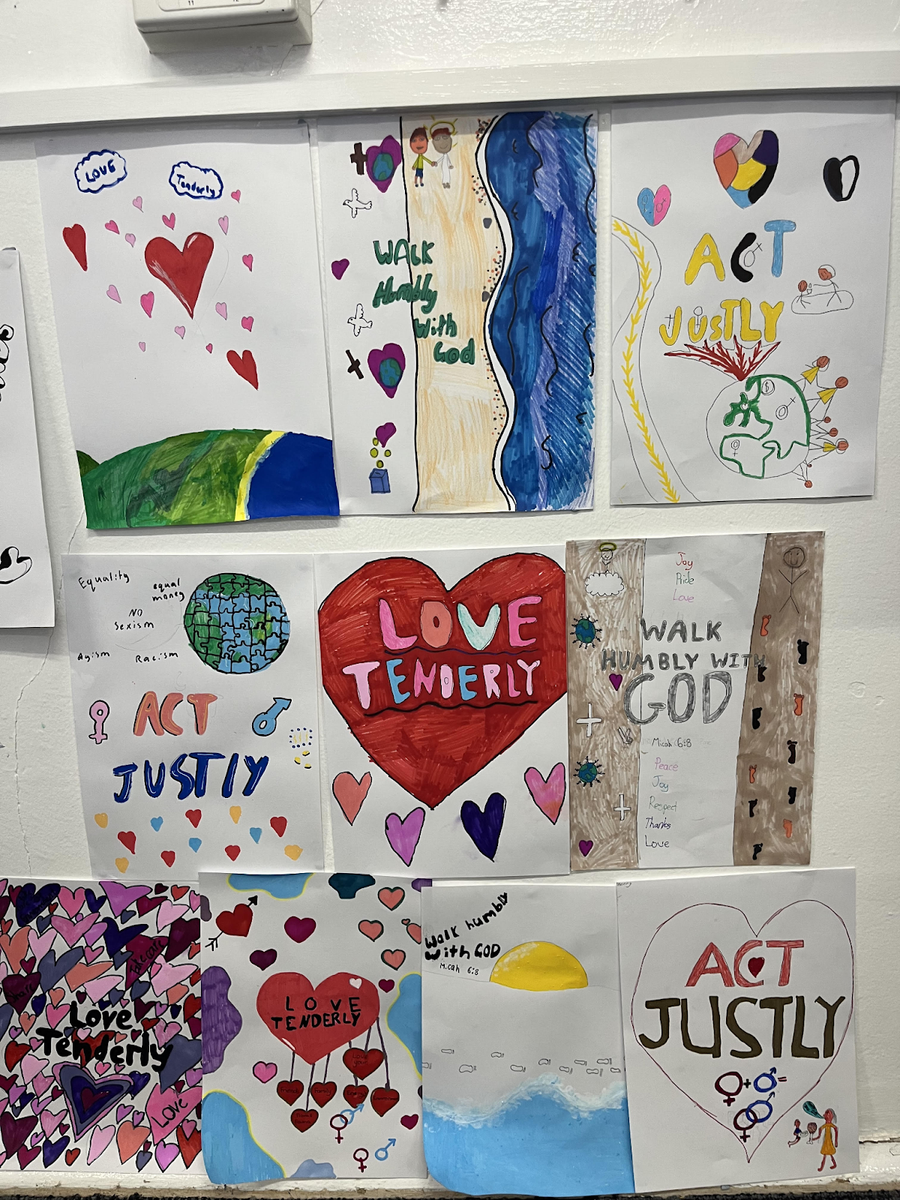Classroom Gallery

HONOURS FOR THE UNIVERSITY OF NEW ENGLAND SCHOOL ACQUISITIVE ART PRIZE - "Let's Hang It" 2024
What’s happening in 5/6?
Term 3…! Where did that come from? We can’t believe that Year 6 are halfway through their final year at primary school. We have had a very busy start to the term. Please see some of our work below.
HIstory
We have commenced study of ‘Australia as a Nation’ as we prepare to embark on our excursion to Canberra, our nation’s capital, next term. This topic moves from colonial Australia to the development of Australia as a nation, particularly after 1901. Students will explore the factors that led to Federation and experiences of democracy and citizenship over time. Students will learn about the significance of Australia’s British Heritage, the Westminster system and other models that influenced the development of Australia’s system of government. Across this semester, students will learn about the way of life of people who migrated to Australia and their contributions to Australia’s economic and social development. In this unit, students explore groups of people who migrated to Australia and the reasons for their migration. They identify and explore the contributions of different individuals and groups to the development of Australian society.
In a classroom full of history buffs, we are loving this unit already!
Religion: The Reign of God, Breaking Down the Barriers
This unit explores how Jesus broke down barriers that prevented right relationships. It looks at concepts such as personal and social sin, and how our behaviour and relationships can advance or hinder the reign of God. Students will explore issues of prejudice, discrimination, rejection and acceptance, exclusion and inclusion.
Maths
In Maths we have been focusing on ‘Multiplicative Relations’. Students are required to determine products and factors and use a range of mental and written strategies to multiply 2-, 3- and 4- digit numbers by 1- digit numbers. They are expected to use estimation and rounding to check the reasonableness of their answers to calculations.
How can parents help at home?
Use Real-Life Examples
Grocery Shopping: Ask your child to calculate the total cost of multiple items or compare prices to determine better deals.
Cooking: Use recipes to illustrate multiplication, such as doubling a recipe or dividing it into portions.
Use highlighters to mark important information. Word problems are overwhelming, but you can help your child break the problem down by only highlighting the parts of the problem that are important. Teach them to highlight important numbers and key phrases in math problems so they can focus on what matters.
Talk about and use in everyday situations all the different language that is used for the four operations (addition, subtraction, multiplication and division).
Real-World Scenarios: Incorporate multiplication questions into daily activities, like setting the table (e.g., "If each person gets 3 pieces of cutlery, how many pieces do we need for 4 people?").
English
This term we have commenced the study of a new novel: Tom Appleby, Convict Boy by Jackie French.
Overview:
Tom Appleby, Convict Boy is a compelling historical fiction novel set in 18th-century England and Australia. The story follows the life of young Tom Appleby, a poor and orphaned boy living in London during the time when children faced dire circumstances. When Tom steals some money and a handkerchief, he is caught and sentenced to transportation, along with other convicts, to the distant shores of Australia.
As Tom embarks on the perilous journey aboard a convict ship, he faces harsh conditions, brutal treatment, and the uncertainty of his future. However, upon arriving in the British penal colony of New South Wales, Tom finds himself adapting to a harsh and unforgiving new environment. He must navigate the challenges of his convict status, including encounters with strict authorities, dangerous criminals, and the struggle for survival in the untamed Australian wilderness.
Throughout his journey, Tom's resilience and resourcefulness are tested as he forges unexpected friendships, falls in love, and seeks redemption. The novel sheds light on the harsh realities faced by convicts and explores themes of justice, hope, and the enduring human spirit.
Tom Appleby, Convict Boy is a captivating tale that transports readers to a time and place where the distinction between right and wrong is blurred, and where a young boy's courage and determination pave the way for an unforgettable adventure.
By the end of this unit, students will be able to:
- Identify core social, personal and moral messages within texts
- Question the assertions made by authors when engaging with texts
- Analyse attributes of character
- Identify the ways different elements of a text contribute to character development
- Identify how perspective is made evident through authorial choices
- Learn new vocabulary from reading, and use them in writing and discussions
- Vary sentence structures or lengths when using simple, compound and complex sentences, with a focus on achieving clarity and effect suited to text purpose
- Write summary sentences to identify the main ideas in the text
- Understand the purpose, structure and features of an information report
- Understand the purpose and structure of an introduction, body paragraph and conclusion for an information report
- Plan an information report by drawing on texts read, viewed and listened to for ideas
- Research, summarise and list topic-related ideas when planning
- Plan, create, edit and publish an information report incorporating language features of an information report, correct spelling, punctuation and grammar










